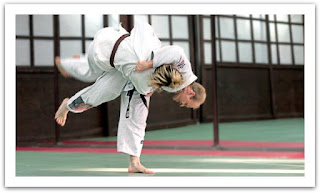by Phillip Starr
In chatting with one of my senior students, I mentioned that learning martial arts is much like learning mathematics or a foreign language. Let me explain...
To learn math...you begin with simple arithmetic:
You must first learn how to read, speak, and write the symbols for the numbers. Sound easy? Well, you learned how to do a long time ago. So just to be fair, try doing it in Chinese! This'll put you back to square one pretty quick. These simple symbols represent the most fundamental techniques...
Now you have to learn double-digit numbers; how to write and say them. These represent the introduction of other basics such as stances, which are used in conjunction with #1.
Alright – now for triple-digit numbers and beyond. This is trickier than you'd think and it is essential to your progress if you plan to move beyond #2; this could represent learning the most basic body actions (and breathing) that infuse your technique with some measure of power.
To go any further, you're going to have to be pretty good at #1 to #3. So now we'll introduce a new concept...ADDITION. Single digits only. What might this be? We might compare it to actually MOVING from one stance to another (aka., footwork).
Now for single digit SUBTRACTION, which is going to be a pretty new concept. This could be represented by learning to execute basic techniques and movements in simple combinations.
Now for double-digit addition. This takes some work conceptually. It's like a whole new world. We might compare this to the most basic form(s) of practice involving a partner...you'll learn how to apply the most basic techniques and movements in very basic ways.
At this stage, some students like to try to venture out on their own and find “new” applications or principles. They're guaranteed to fail, just as a five-year old who tries to move much past single-digit addition will fail.
1. Yep, next is double-digit subtraction! This could be learning new techniques and movements, how to execute combinations with the proper body actions, and so forth.
TRIPLE-digit addition! A new and confusing concept at first, but once you get the hang of it it's not too difficult. This could be the introduction of a basic form, including the proper form(s) of breathing, footwork, rhythm, and power that it uses.
Now, triple-digit subtraction! Here, we might introduce basic applications of the first basic form. BASIC applications!
Now for a whole new concept; DIVISION! It's confusing at first and you must have mastered the previous 9 steps. Here, we might introduce the BASIC form of freestyle sparring. It's critical that the student has a firm foundation through the previous 9 steps, or he'll be totally lost.
Then comes multiplication...learning to blend all that's been learned so far into the practice of BASIC sparring. Nothing fancy, just very basic material.
So, basic arithmetic comes to an end. But you're just getting started- Algebra/Geometry is next:
We start with ALGEBRA 1. This could well be compared to a more advanced form that may involve more complex combinations and forms of footwork.
GEOMETRY is next in line. Learning more advanced forms of footwork and body movement (for power)...and how to combine them in different ways. This is another risky point where students sometimes go off on their own, trying to mix principles/concepts. It's akin to trying to blend multiplication with Algebra 1 and Geometry. It isn't going to work. Everything must be learned in stages.
ALGEBRA II/TRIGONOMETRY...More advanced forms and how to break them down; learning to apply the principles learned thus far to these forms as well as previous forms...
PRE-CALCULUS: Now, perhaps the student learns the principles of coiling power and how to perform fajin (emitting power via coiling) in very basic ways. Although quite different from what has been learned in earlier training, the principles learned back in the basic training MUST be mastered.
CALCULUS: Could this be compared to emitting jin (power) in combinations?
CALCULUS 3: Learn very advanced principles that may seem to be in opposition to some of the basic principles learned earlier (such as weight shifting) and so on...
This is just a basic outline that can easily be adjusted, according to what martial art or style of martial art you practice. Because math is actually a language, this same outline can be compared to learning a foreign language; first, you learn how to read and pronounce a few words. You'll move on to writing them and learning basic phrases and sentences. From there, you must learn to HEAR and understand what is being said and respond appropriately.
Eventually, you must learn to speak (and write) paragraphs and acquire an understanding of the language's sentence structure. If you hope to become fluent, you'll pass through numerous stages until you eventually THINK in that language instead of trying to translate your thoughts from English into the appropriate words., which results in slow speech and stuttering. It can't be done quickly and there are no short-cuts.
Sometimes, a student will try to jump ahead, cut corners, or extrapolate (come up with hypotheses). This always leads to disaster. Always. Imagine getting to the stage of double-digit numbers work and trying to jump into division...! Or beginning to learn algebra and trying to move to the next stage after studying it for just a week! It doesn't work that way. Some try to apply relatively advanced concepts that they are only vaguely familiar with, to earlier stages...like hearing about a particular concept or principle used in Trigonometry to basic Multiplication!
It's essential that the student master each stage before going on to the next. Like building a structure, the upper-level bricks rely on the lower bricks to keep the whole thing from crumbling.























No comments:
Post a Comment